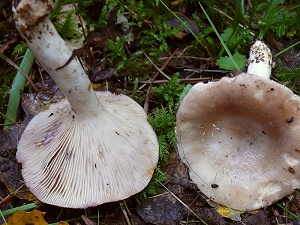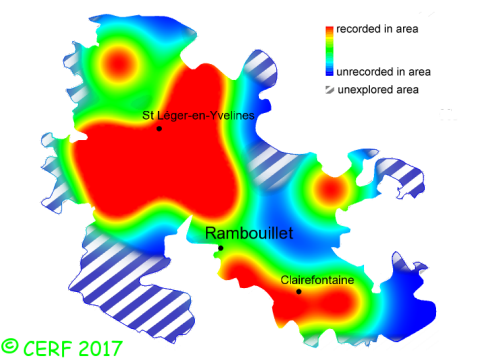| Lactarius vietus (Fr.:Fr.) Fr. |
|
|
|
|
|
|
The cap is grey violet to flesh grey. The cap surface is smooth, viscid when damp. The stem is whitish, without ring. The flesh is whitish, unchanging; its taste is acrid; the odour is not distinctive; its texture is grainy (breaking like a chalk stick), exuding when cut a whitish milk becoming grey. The gills are cream slightly pink then light yellow, decurrent to adnate, crowded . The spore print is creamy white with slight salmon tinge (A-B). This species is mycorrhizal. It grows in damp places (with peat or sphagnum), on a rather acid soil, only with birch, sometimes mixed with pine. The fruiting period takes place from July to November.
Chemical tests : none. Distinctive features : gills becoming grey (milk solidifying into grey pearls); in damp places, swamps Lactarius vietus is infrequent and widely present in the forest of Rambouillet, and is frequent, more generally speaking . | ||
|
page updated on 14/01/18

